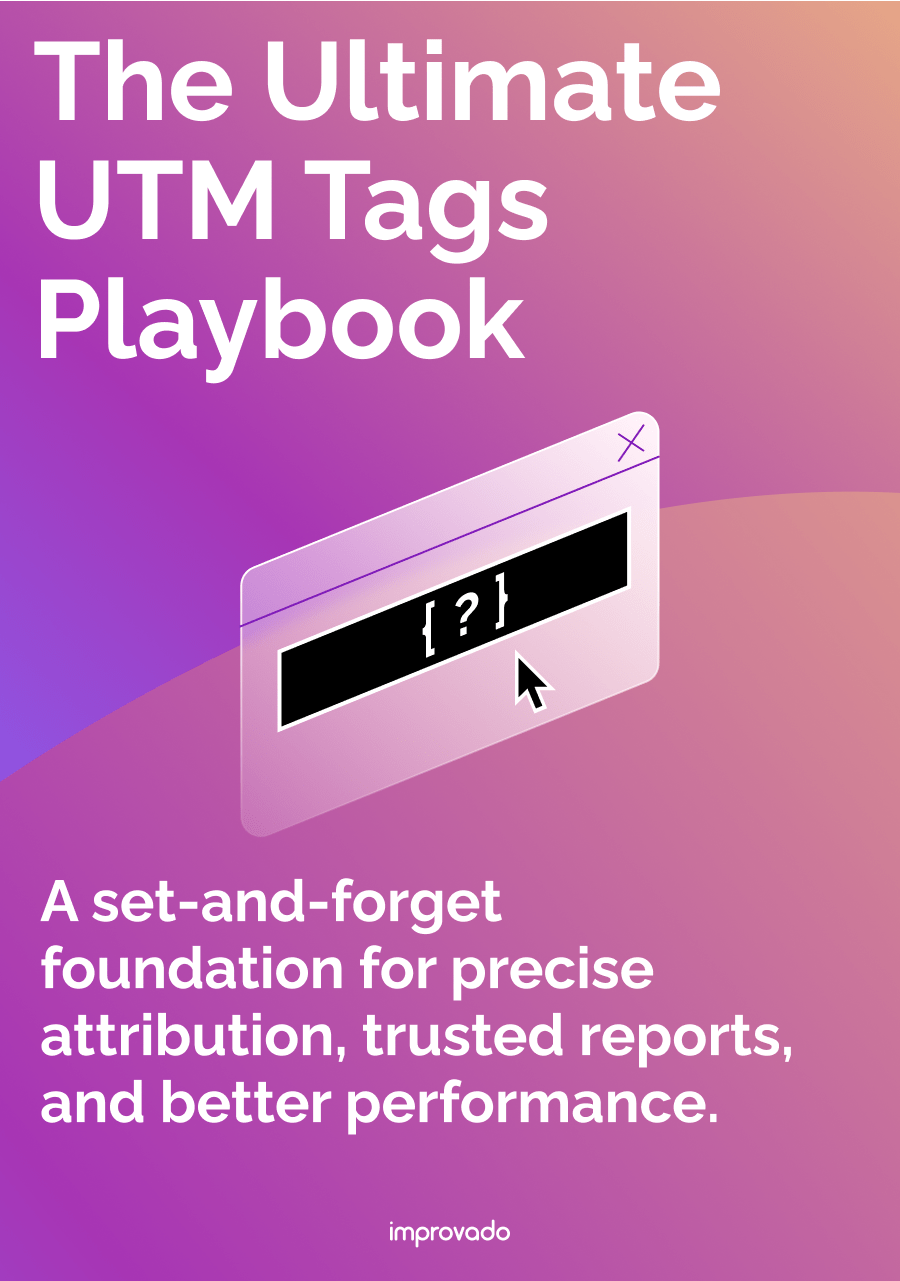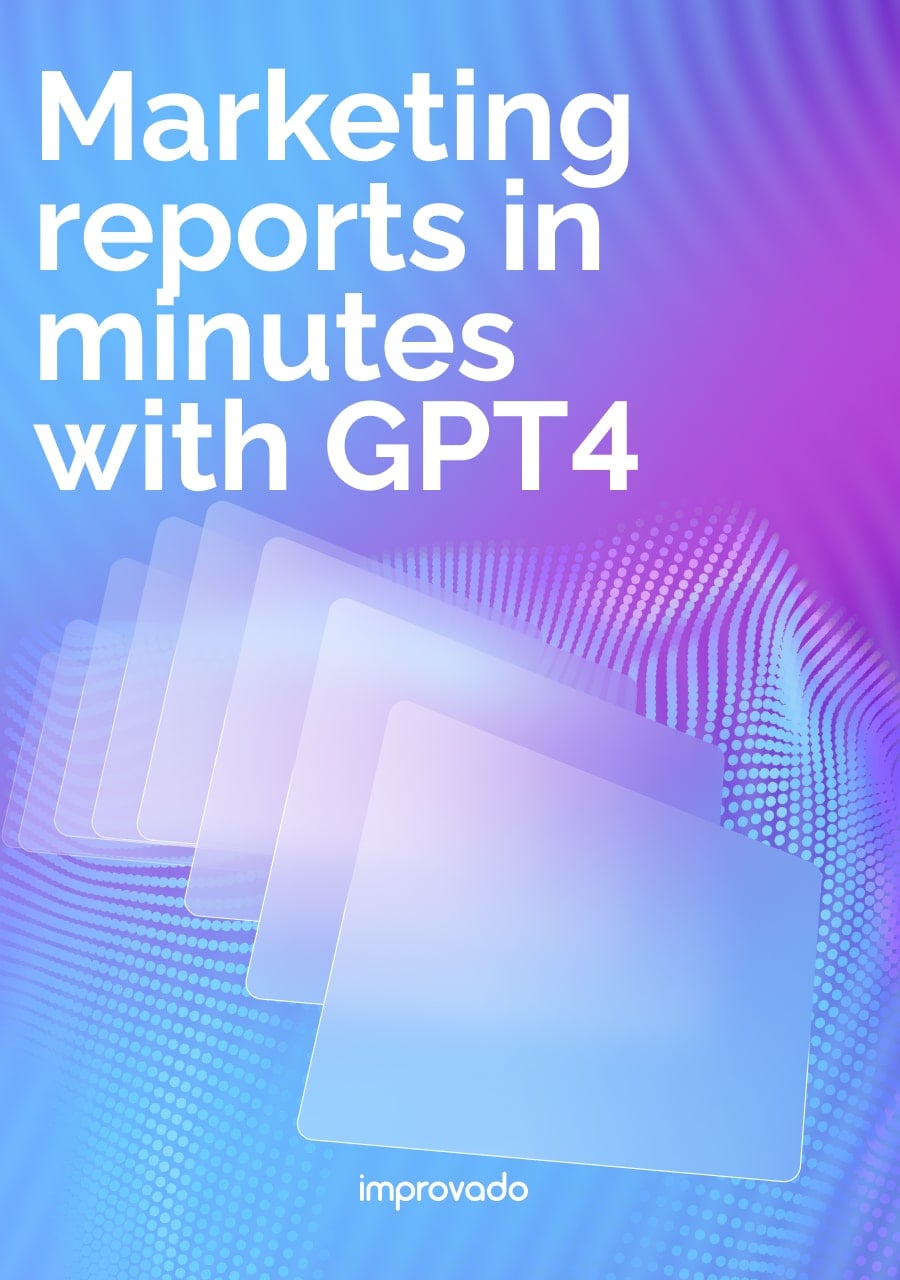Some marketing ideas work. Many don’t. The biggest challenge is finding out which ones drive real impact. You need to identify winners before the budget gets wasted. This is the core of marketing optimization: continuously refining every strategy to improve efficiency and maximize returns.
This guide breaks down the strategies, tools, and frameworks you need to make smarter decisions and drive predictable growth.
Key Takeaways:
- Unified data is foundational: Effective marketing optimization is impossible with siloed data. A centralized data source is the first step to unlocking cross-channel insights.
- Optimization is a process, not a project: It involves a continuous cycle of measurement, analysis, testing, and implementation across all marketing channels.
- Focus on business outcomes: Move beyond vanity metrics like clicks and impressions. Prioritize metrics that directly impact revenue, like ROAS, CAC, and Customer Lifetime Value (LTV).
- AI and automation are accelerators: Leverage technology to automate repetitive tasks, personalize experiences at scale, and generate predictive insights for faster, more accurate decision-making.
What Is Marketing Optimization, Really?
Marketing optimization is the systematic process of improving marketing efforts to achieve the best possible outcomes. It involves using data, analytics, and structured testing to refine campaigns, messaging, and budget allocation.
The primary goal is to maximize efficiency and return on investment (ROI). It's about making every marketing dollar work harder.
This process is not random. It relies on a "test and learn" mentality. Marketers analyze performance data to identify areas of waste or opportunity. Then, they make data-driven adjustments to enhance results across all channels.
This continuous loop ensures that strategies evolve and improve over time. It transforms marketing from a cost center into a predictable growth engine.
Why Marketing Optimization Is Non-Negotiable in 2025
In a competitive market, optimization is essential for survival and growth.
Rising ad costs and increasing consumer privacy restrictions make it harder to reach the right audience. Without a systematic optimization process, companies risk falling behind. They misallocate budgets, miss signs of performance decline, and fail to capitalize on market opportunities.
Effective marketing optimization directly impacts profitability in several key ways:
- Reduces customer acquisition cost (CAC): By targeting more effectively and improving conversion rates, you acquire customers for less money.
- Increases return on ad spend (ROAS): Optimizing campaigns ensures your budget flows to the highest-performing channels and tactics, boosting overall returns.
- Maximizes customer lifetime value (LTV): By personalizing communication and improving the customer experience, you encourage repeat business and loyalty.
- Provides a competitive edge: Companies that optimize faster and more effectively can outmaneuver competitors, capturing market share even with smaller budgets.
Advanced optimization frameworks can identify subtle performance patterns that humans miss. They can even automate responses to these patterns. This allows companies to operate efficiently at scale while maintaining their target performance goals.
The Core Pillars of a Modern Marketing Optimization Strategy
Effective optimization isn't about tweaking one variable. It's a holistic approach built on four interconnected pillars.
These pillars work together to ensure you reach the right people with the right message, at the right cost, and with the right technology.
1. Audience Segmentation and Targeting
The foundation of all marketing is knowing your audience. Without precise targeting, even the best creative will fail.
Modern target audience optimization involves creating dynamic segments based on behavior, intent, and value.
- Behavioral segmentation: Group users based on their actions, such as pages visited, content downloaded, or products viewed.
- First-party data activation: Use your own customer data from your CRM or customer data platform to build high-value lookalike audiences.
- Predictive audiences: Leverage AI to identify users who are most likely to convert, churn, or become high-value customers.
2. Budget Allocation and Performance Scaling
Deciding where to invest your marketing budget is one of the most critical optimization tasks. A structured approach removes guesswork and minimizes waste. This requires constant monitoring and agility.
- Start with monthly budget reviews to assess channel-level ROAS and CAC trends.
- Use weekly monitoring for tactical shifts, like adjusting campaign budgets in Google Ads.
- For high-spend events like Black Friday, daily or even hourly monitoring may be necessary to react to real-time performance data.
To support this level of responsiveness, Improvado’s Marketing Data Governance provides real-time visibility into how budgets and performance evolve across channels. Instead of waiting for a scheduled review, the system flags meaningful deviations the moment they occur.
For example, if a paid social campaign begins accelerating spend faster than planned, the platform triggers an alert so the team can rebalance pacing before it burns unnecessary budget.
Or if you want to avoid the situation where your budget is unintentionally spent on extended placements, you can activate one of the pre-built campaign set-up rules. Marketing Data Governance will notify you if extended placements are included in a campaign’s settings, ensuring your budget stays aligned with your goals.
This continuous monitoring creates an always-on feedback loop.
Marketers catch problems immediately, move budgets to higher-performing campaigns, and protect efficiency during volatile periods.
3. Creative and Messaging Optimization
Your creatives and copy are what connect with your audience. This pillar focuses on continuous testing to find the messages that resonate most deeply.
The goal is to ensure every asset drives engagement and conversions.
- A/B testing: Systematically test headlines, images, calls-to-action (CTAs), and offers.
- Message personalization: Tailor messaging based on audience segment, journey stage, or past behavior.
- Format experimentation: Test different creative formats, such as video, carousels, static images, or user-generated content, to see what performs best on each platform.
4. Leveraging Marketing Automation and AI
Technology is the accelerator for the other three pillars. Automation and AI streamline repetitive tasks, enhance personalization at scale, and deliver real-time insights for faster decision-making. This technology transforms optimization from a manual chore into an automated, intelligent system.
Focus on automating campaign management, audience segmentation, and performance analytics.
Advanced teams use AI Agents to analyze cross-channel data, detect anomalies, and recommend or execute optimizations automatically.

Improvado’s AI Agent brings this vision into practice by acting as a marketing-analytics assistant trained for your data and your business. It turns natural-language prompts into actionable insights, dashboards, and even optimization suggestions.
Features include:
- Ask any question in plain English and receive answers with visualizations. For example: “Which ad sets are under-performing this week?” or “Show CAC trend by region.”
- Immediate generation of charts, dashboards, and scheduled insights: “Build me a daily report showing ROAS by channel, send to Slack every morning.”
- Recommendations for optimization: it can suggest shift of budget, audience re-targeting, or creative changes based on live performance trends.
- No-code execution support: users don’t need SQL or BI expertise, the AI Agent embeds into the broader Improvado platform that handles ingestion, transformation, governance and visualization.
Channel-Specific Optimization: A Tactical Deep Dive
While a holistic strategy is crucial, true performance gains come from mastering the unique levers within each marketing channel.
Here’s how to approach optimization for the most critical digital marketing channels.
How Does SEO Support Optimization?
Search Engine Optimization (SEO) is a cost-efficient way to capture high-intent demand. It requires continuous refinement across four core areas to maintain and grow organic visibility.
- Keyword strategy: Target a mix of high-intent commercial keywords and long-tail informational queries. Move beyond search volume and focus on keywords that align with business value and conversion potential.
- On-page optimization: Ensure content has depth, a logical heading structure, and strong internal linking. Use structured data (schema) to help search engines understand your content and earn rich snippets.
- Technical health: Optimize your site's architecture, page speed, and mobile-first design. A healthy technical foundation is crucial for search engines to crawl and index your site efficiently.
- Authority building: Develop high-quality backlinks from reputable sources through strategic partnerships, guest posting, and creating link-worthy content. This signals to search engines that your site is a trusted authority.
How Can Content Marketing Be Optimized?
Content is the fuel for your demand generation engine. Optimization begins with a thorough audit and ends with a distribution strategy that maximizes reach and impact.
- Conduct a content audit: Identify and remove redundant, outdated, or underperforming content. Find content gaps that prevent prospects from moving through the funnel.
- Build topic clusters: Organize content around core pillar pages and supporting cluster content. This structure improves user experience and signals topical authority to search engines.
- Personalize the experience: Adapt your content's tone, depth, and CTA based on the audience segment and their stage in the customer journey.
- Amplify through strategic distribution: Don’t just publish and pray. Promote your content through email, paid channels, social media, and partner networks to maximize its reach.
How Do You Optimize PPC Campaigns?
Paid search and display ads can drive rapid growth, but costs can spiral without disciplined optimization. The key is a focus on continuous testing and leveraging smart automation to maintain efficiency.
- Keyword and bid management: Continuously expand winning keywords and prune underperformers. Maintain an aggressive negative keyword list to avoid wasted ad spend on irrelevant searches. Use automated bidding strategies but monitor them closely.
- Creative and ad copy testing: Regularly A/B test headlines, descriptions, offers, and CTAs. Small improvements in click-through rate (CTR) can significantly improve Quality Score and lower your cost-per-click (CPC).
- Landing page alignment: Ensure a strong message match between your ad copy and your landing page. A consistent experience boosts conversion rates and is a key factor in Quality Score.
- Audience layering: Go beyond keywords. Layer your campaigns with audience targeting, including demographics, in-market segments, retargeting lists, and lookalike audiences for higher efficiency.
How Should Social Media Marketing Be Optimized?
Social media optimization requires a delicate balance between organic engagement and paid amplification. Each platform has its own best practices and audience expectations.
- Align with native formats: Tailor your content to what works best on each platform. This could be short-form video on TikTok and Instagram Reels, professional articles on LinkedIn, or carousel posts on Facebook.
- Focus on meaningful engagement: Look beyond vanity metrics like likes. Track shares, saves, and comments as stronger indicators of content that resonates with your audience.
- Optimize timing and frequency: Use platform analytics to determine when your audience is most active. Schedule posts for these peak times to maximize organic reach, especially for global campaigns.
- Continuously test paid campaigns: For paid social, constantly A/B test creative variations, audience definitions, and placements to identify the most efficient combinations.
Building Your Optimization Engine: Data, Governance and Technology
Sustainable marketing optimization requires a solid foundation of data, processes, and technology. This "engine" is what allows you to scale your efforts, maintain consistency, and make confident, data-backed decisions.
The Critical Role of a Unified Data Infrastructure
Your ability to optimize is directly limited by the quality and accessibility of your data.
Data fragmentation is the biggest roadblock to scalable optimization. When data lives in separate, disconnected platforms, it’s impossible to get a complete view of the customer journey.
A comprehensive measurement infrastructure starts with data integration, bringing all your marketing data into one centralized location, like a data warehouse. This unified view is the bedrock of all advanced analysis.
Improvado strengthens this foundation by consolidating the entire data lifecycle into a single, marketing-focused platform. Instead of stitching together multiple tools or relying on manual processes, teams work from governed, analysis-ready data that updates automatically.
Core capabilities include:
- 500+ prebuilt marketing and sales connectors to extract data reliably from every major ad platform, CRM, and analytics tool.
- A no-code transformation engine that standardizes naming conventions, aligns schemas, blends datasets, and applies business logic without SQL.
- Prebuilt cross-channel data models that unify metrics such as spend, conversions, revenue, ROAS, and CAC across platforms.
- Automated data quality checks that catch missing fields, structural changes, or broken integrations before they affect reporting.
- Marketing Data Governance for monitoring rule adherence, pacing deviations, and performance anomalies across the entire campaign ecosystem.
- A managed data warehouse option for teams that want an end-to-end infrastructure without additional engineering overhead.
- AI Agent support that provides natural-language access to the entire data foundation, generating insights, dashboards, and recommendations instantly.
This data foundation eliminates inconsistencies and enables faster, more confident optimization across every channel.
Governance: Enforcing Standards and Accountability
Data governance involves creating and enforcing standards for how data is collected, stored, and used. It’s about ensuring data quality and consistency across the organization. Key components include:
- Standardized naming conventions: Consistent campaign naming conventions (e.g., using UTM parameters correctly) are essential for accurate tracking and reporting.
- Data quality monitoring: Implement automated checks and alerts to identify data inconsistencies or tracking issues before they corrupt your analysis.
- Clear ownership: Define who is responsible for data quality and management within the marketing team to ensure accountability.
Decision Engines: From Data to Action
A decision engine is the system, both human and technological, that turns raw data into optimized actions. This is where insights from your analytics are translated into budget shifts, creative updates, and strategic pivots.
This engine can range from a team of analysts reviewing marketing dashboards to sophisticated AI platforms that automate recommendations. The goal is to reduce the time between insight and action.
Measuring What Matters: From Vanity Metrics to True ROI
You can't optimize what you can't measure accurately. Many organizations get stuck tracking vanity metrics that don't correlate with business success.
True optimization focuses on metrics that directly reflect business impact. This requires a sophisticated approach to measurement and attribution.
Building a Comprehensive Measurement Framework
A strong measurement framework connects marketing activities to business outcomes. It involves tracking metrics across the entire customer funnel, from initial awareness to final conversion and retention.
This framework should be built on a solid foundation of reliable marketing analytics. It provides the data needed to understand performance at every stage and make informed decisions.
Applying Attribution Models Aligned with Business Goals
Attribution is the science of assigning credit to the marketing touchpoints that influence a conversion. There is no one-size-fits-all solution. The right choice depends on your business model and customer journey complexity. Different attribution models provide different views of performance:
- First-touch: Credits the first marketing touchpoint a customer interacts with. Good for understanding top-of-funnel channels.
- Last-touch: Credits the final touchpoint before conversion. Simple but often overvalues bottom-funnel channels.
- Multi-touch (e.g., linear, u-shaped): Distributes credit across multiple touchpoints, providing a more balanced view.
- Data-driven attribution: Uses machine learning to assign credit based on the actual impact of each touchpoint. This is the most accurate but requires significant data.
Your goal should be to move beyond simplistic last-touch models to get a more holistic view of channel performance.
Analyzing True Channel Contribution and Incrementality
Ultimately, the goal is to understand the true impact of your marketing spend. This means looking beyond simple correlations and measuring causality.
Techniques like incrementality testing (e.g., geo-lift studies or holdout groups) help you determine how many conversions would have happened anyway without a specific marketing activity.
This allows you to calculate the true, incremental marketing ROI and make much smarter budget allocation decisions.
Marketing Optimization Models: A Strategic Comparison
Teams can waste years on manual, siloed efforts that yield minimal results. Understanding the differences between manual, automated, and AI-driven optimization helps you select the right strategy for your team's maturity and goals.
The most advanced organizations blend all three, using AI to guide strategy and automation to execute it.
The Role of AI and Automation in Scaling Optimization Efforts
Artificial intelligence and automation are essential tools for modern marketing optimization. They allow teams to move faster, make smarter decisions, and execute with a level of precision that is impossible to achieve manually.
The impact of AI is felt across the entire optimization lifecycle, from data analysis to campaign execution.
AI for Predictive Analytics and Forecasting
AI models can analyze historical data to predict future outcomes. This capability is a game-changer for budget planning and strategy. For example, AI can:
- Forecast conversions based on different budget scenarios.
- Identify high-value customer segments that are most likely to convert.
- Predict customer churn, allowing you to intervene with retention campaigns.
This predictive power helps marketers allocate resources proactively rather than reactively, a core tenet of advanced optimization.
Automation for Real-Time Campaign Management
Automation excels at handling repetitive, rule-based tasks at scale. This frees up marketers to focus on strategy and creativity. Common automation use cases in optimization include:
- Automated bidding: Platforms like Google Ads use machine learning to adjust bids in real-time to maximize conversions or value.
- Performance alerts: Set up automated alerts that notify you of significant changes in performance, such as a sudden drop in ROAS or a spike in CPA.
- Budget pacing: Use scripts or tools to automatically adjust daily budgets to ensure campaigns stay on track throughout the month without overspending.
The Emergence of AI Marketing Agents
The next frontier is the AI marketing agent. These tools go beyond simply reporting on data or automating a single task.
An AI agent can analyze cross-channel performance data, diagnose complex problems, recommend specific actions, and in some cases, execute those optimizations automatically. They act as an intelligent assistant to the marketing team, constantly monitoring for opportunities and threats across the entire marketing ecosystem.
Common Challenges in Marketing Optimization (And How to Solve Them)
The path to effective optimization is often filled with obstacles. Recognizing these common challenges is the first step toward overcoming them. Most of these issues stem from foundational problems with data, strategy, and organizational alignment.
1. Data Fragmentation Blocks Scalable Optimization
The Challenge: Data is scattered across dozens of marketing platforms, CRMs, and analytics tools. This makes it impossible to get a unified view of performance, leading to flawed decisions.
The Solution: Implement a marketing data integration platform like Improvado. Centralize all your data into a single source of truth, such as Google BigQuery, Snowflake, or Amazon S3. This solves the root problem and enables true cross-channel reporting and analysis.
2. Attribution Remains a Persistent Challenge
The Challenge: Companies struggle to accurately attribute conversions to the right channels, often relying on simplistic last-click models that undervalue top-of-funnel activities.
The Solution: Move toward more sophisticated attribution models. Start with a multi-touch model that fits your business, and explore data-driven attribution or marketing mix modeling (MMM) for a more strategic view of channel impact.
3. Siloed Channel Optimization Limits Overall Impact
The Challenge: The SEO team optimizes for organic traffic, the PPC team for clicks, and the social team for engagement. These teams operate in silos, sometimes working against each other.
The Solution: Establish shared, business-level goals and KPIs (like total leads or revenue). Use a unified analytics platform where all teams can see how their efforts contribute to the bigger picture. Foster a culture of collaboration over channel-specific competition.
4. Inconsistent Tracking and Poor Data Quality
The Challenge: Missing or inconsistent UTM parameters, broken tracking pixels, and messy data lead to inaccurate reports. Garbage in, garbage out.
The Solution: Implement strict data governance protocols. Use a UTM management tool, create a standardized campaign naming convention, and conduct regular data quality audits to ensure your foundation is clean.
5. Overreliance on Vanity Metrics
The Challenge: Teams celebrate high impression counts or click-through rates, even when those metrics don't lead to more revenue. This creates a false sense of success.
The Solution: Shift the focus of reporting and goal-setting to business outcomes. Build dashboards that clearly connect marketing activities to metrics like CAC, LTV, and ROI. Tie team incentives to these bottom-line metrics.
How to Implement a Marketing Optimization Framework: A Step-by-Step Guide
Getting started with marketing optimization can feel overwhelming. A structured framework breaks the process down into manageable steps.
This iterative cycle, often called a "virtuous loop," ensures continuous improvement over time.
- Define goals: Start with the end in mind. What business outcome are you trying to achieve? Increase revenue by 15%? Reduce CAC by 20%? Your goals must be specific, measurable, achievable, relevant, and time-bound (SMART).
- Establish a baseline: Before you can improve, you need to know where you stand. Gather baseline performance data for your key metrics. This will be the benchmark against which you measure all future optimization efforts.
- Develop a hypothesis: Based on your data, form a clear hypothesis. For example: "We believe that changing our landing page CTA from 'Learn More' to 'Get a Free Demo' will increase our conversion rate by 10% because it is more specific and value-driven."
- Design and execute a test: Create a controlled experiment to test your hypothesis. This is often an A/B test, but it could also be a multivariate test or a before-and-after analysis. Ensure you have a large enough sample size to achieve statistical significance.
- Analyze the results: Once the test is complete, analyze the data. Did you prove or disprove your hypothesis? What did you learn? Look for both the primary outcome and any secondary insights that emerged.
- Implement the winner and iterate: If the test was successful, implement the winning variation across your campaigns. If it wasn't, document the learnings. Either way, use the results to form your next hypothesis and start the cycle over again. Optimization is never truly "done."
Conclusion
Marketing optimization is not a one-time fix. It is a fundamental shift in mindset and process. It's about building a culture of continuous improvement fueled by data, not opinions. The teams that win are the ones that unify their signals, eliminate blind spots, and ground decisions in a complete, timely, and trustworthy view of performance.
Improvado provides the infrastructure to make that foundation real. By unifying cross-channel data, normalizing it into consistent structures, and feeding it into AI-driven analysis, Improvado gives marketing teams the visibility and speed they need to optimize holistically.
Instead of relying on fragmented tools or tedious manual workflows, teams get one scalable system that powers smarter budget allocation, deeper insights, and faster decisions.
If you want to see how unified data and AI-driven insights can transform your marketing optimization strategy, book a demo with Improvado.
.png)






.png)
